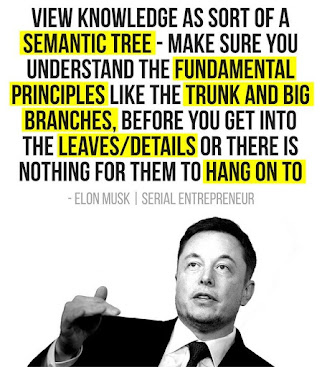***Continued from Chapter 01 (Covered previously: What Is Big Picture Thinking, Importance Of Big Picture Thinking, Detail Oriented Or A Big Picture Thinker- The Difference)
Why Big Picture Thinking Matters
At times, it can be hard to focus on the bigger picture, especially if you tend to be detail-oriented. It’s tempting to get bogged down in daily tasks and to-do lists. But taking time to step back and look at the broader context offers several key benefits:
Scientific studies have shown that entrepreneurs who embrace big picture thinking are more successful in navigating uncertain situations and discovering innovative solutions. This is why many startups, like Amazon and Netflix, have been able to pivot and thrive by looking beyond their initial business models.
Identifying the Different Approaches - Approach Indicators
No matter which field we belong to – an aspiring entrepreneur, someone who’s putting together a dream team, or polishing our leadership skills, big picture thinking can help open up, innovative and unexpected creative paths, ideas and solutions.
Balancing Big Picture and Detail-Oriented Thinking
Big picture thinking doesn’t mean ignoring the details—it means using your broader vision to guide your approach to the smaller tasks. Detail-oriented thinkers excel at refining processes and executing strategies, but they can sometimes get too caught up in perfectionism, losing sight of the larger goal.
To achieve optimal results, a balance between both thinking paradigms is essential. You need to be able to zoom in and zoom out—addressing the fine points while keeping the broader mission in mind.
The Balance: Big Picture & Detailed Orientation- Components in Business
Strategies Towards a Big Picture Focus
A) Identify
habits that limit our big picture thinking ability:. . . Our natural preferences often prevent us from blue sky
thinking. So, the first step: break bad habits. Here’s a 3-step framework:
B) See things
from a different lens: . . . Diving
into big picture questions helps us connect the dots from our actions/tasks to the
big goal. In this book, The Magic of Thinking Big, David J. Schwartz
calls this, “see what can be, not just what is.” A good starting point is to
ask ourselves, ‘what am I trying to achieve?’ Some big picture questions may be:
C) Think big by looking up: . . . The super basic rundown is that whenever we are focusing on the big picture, look up. And look down when not seeing the big picture.
A nice example of chunking
reasoning is to think of transport. We can start with a motor car. If We chunk
down, We might go to wheel, then rim, then rubber, then tread and even road. If
We chunk up, We might go to transport, then to travel, then to vacation, then
to wellbeing, etc.”
D) Use bulleted lists to think big: . . . This is a trick many of use on a regular basis – making a bulleted list of the big picture and then adding sub-bullets to each pillar step. We can then step back and look at what can be added or removed from the sub-bullet pointers to keep the needle moving forward.
So why did this work? Because
bullet points give us the visuals on the big picture. It’s challenging to connect the
dots when we can’t see them. It’s also tough to translate the big
picture if we don’t have it in front of us. What’s more, bullet points are easy to access
and revise anytime. This, in turn, provides clarity.
E) Start
journaling / mind mapping: . . . When
we put our internal prattle on paper, we can easily spot where we are
flailing or how it can be shaped to fit the bigger picture. To begin with,
note down the big picture, followed by the small details pestering us. The
trick is to make sure that it represents not only the big picture, but that it
represents the detail, or actionable elements as well. Then record our thoughts
to see if they deviate from the big picture plan.
F) Schedule
in some thinking time: . . . Often,
when we rush to make a decision, we end up feeling sorry about it. When this
happens, it's usually for one of three reasons:
If we find ourselves nodding yes to any or all of these points, pencil in some uninterrupted, thinking time to our schedule. This space is crucial to making better decisions that rely on the big picture. We will also be able to rate our priorities better – what matters in the big picture, how it contributes to the big picture and so on. This will help us to stop hustling so hard, and ditch the shiny object syndrome.
Self Reflection- The Key
If we pause and
contemplate how we are doing, we can make small tweaks that help us stay
consistently productive. Some pointers to reflect on may be:
When we are busy executing
any tasks in our lives for far too long, it’s easy to forget the details or the
big picture depending on the type of thinker we are. For instance, as a big
picture thinker, we may be excited by how our old and new ideas are connecting
and work on outlining them, forgetting that the ideas have to be structured by
many crucial details to work in the long term. The details person on the other
hand might be buried in unending to-do-lists, feeling secure in the routines
only to be disrupted by an enormous transition they didn’t anticipate.
Content Curated By: Dr Shoury Kuttappa












Comments
Post a Comment